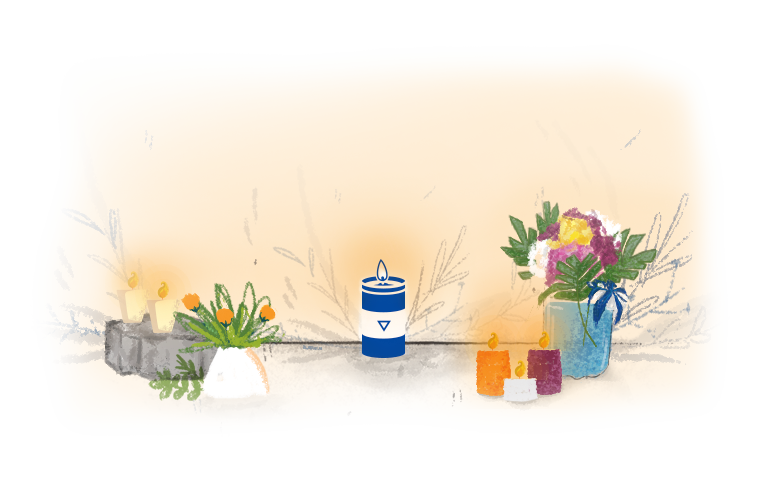
Marcelo de Jesús Mayorga López
40 Years Old -

Marcelo Mayorga, the slingshot man
“He died seeking freedom for Nicaragua”
Murdered in Masaya on June 19, 2018
Marcelo de Jesús Mayorga, who lived in the San Carlos neighborhood of Masaya, was 40 years old and was devoted to San Jerónimo. He was actively involved in religious celebrations, and helped carry the Saint in processions.
He had a very close family, together with his wife Auxiliadora Cardoze, and their two sons: Marcelo, 18, and Ricardo, who was 10. “Being a father was more important to him than anything else. He liked to cook, but it was part of our deal, since we had divided up the household chores and he was in charge of cooking,” recounts his wife. He spent the week earning money, and the weekend was for his family. He was happy, caring, and was a huge baseball fan. Whenever he could, he would go with Ricardito to the stadium to watch the games.

Masaya had been embroiled in rebellion for a month, and very early on June 19, a strong firefight ensued. There were barricades throughout the city and the population defended itself against the police’s “Operation Clean-Up”, which was attempting to recover control of the city. Marcelo Mayorga took part in the “blue and white” protest, and this same morning he was called to deliver him mortars. “Before leaving, he told his older son that he’d left him his breakfast. He told his younger son that he loved him, and assured me he would be back soon,” says Auxiliadora.
She remembers that she spoke to him at 11:25 am, and asked him to come home, but he said he couldn’t because the police and pro-government forces had surrounded the place. She begged him to take refuge in a house. In the midst of the firefight, he called his younger son and spoke to him.
People in Masaya were connected through social networks, and that’s how they shared information about what was happening in the city. Auxiliadora knew that her husband had been wounded because someone posted a photo of a man lying in the street, with his mortar launcher next to him, and she recognized him. “When I saw him, I screamed and fainted. Then I tried to figure out how to go out and get his body. A neighbor came with me, and with a handkerchief tied to a stick as a white flag, we headed out,” she relates.
Crossing barricades, pipes and cobblestones, she was able to reach the place where the photo was taken, but the barricade was gone. It had been removed and only bits and pieces remained. She asked the police nearby about the boys from the barricade. The police answered that ‘those dogs’ were no longer there, and she should never have let them out. And then she saw Marcelo’s body on the side of the street, where he had been dragged to let the “death trucks” pass by. She went to him, picked up his backpack, his cap, and his slingshot, and screamed for help but no one responded. Her screams for help mixed with the noise of gunshots and mortar explosions. No one could get there. The police wouldn’t even let the firefighters get through.
Auxiliadora affirms that when she went to get the body, the police and paramilitaries aimed their high-powered weapons at her. She was able to carry his body home in a wooden cart. The next day, June 20, the funeral procession headed to the cemetery, stepping over the remains of barricades. Marcelo’s friends carried him on their shoulders, and he was buried to the music of the San Jerónimo processions.
Auxiliadora affirms that her life has changed. Now she is both father and mother, and must work more to support her family. “Marcelo died seeking freedom for Nicaragua, and I will not rest until there is justice for the murder of my husband, and for everyone else,” she affirms passionately.
I want to know more